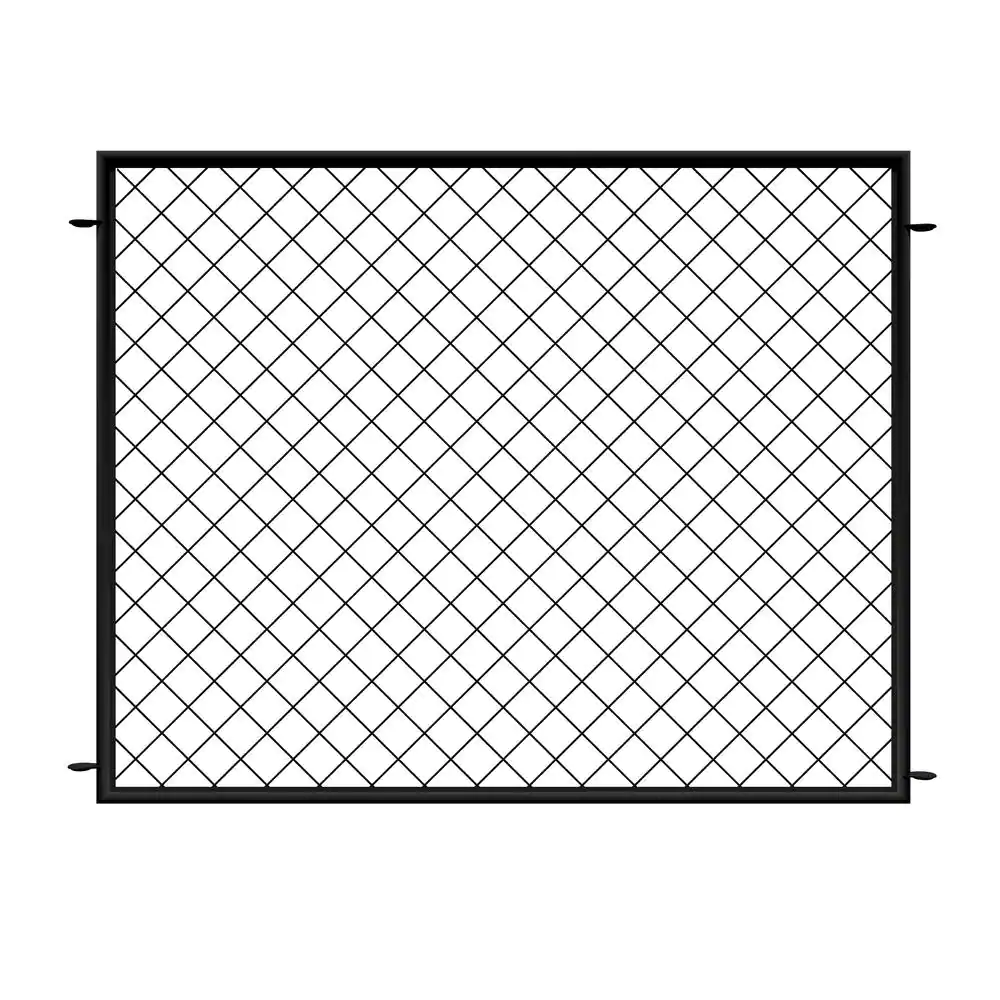Understanding Acoustic Fencing A Solution for Noise Pollution
As urbanization accelerates and populations grow, noise pollution has become an increasingly pressing issue in residential areas, schools, and workplaces. One effective method that has emerged to mitigate this problem is the use of acoustic fencing. Acoustic fencing is designed to provide a barrier that minimizes sound transfer from one area to another, creating a quieter environment for those affected by excessive noise. This article will explore the principles of acoustic fencing, its benefits, types, and applications.
The Science Behind Acoustic Fencing
Acoustic fencing works by absorbing and reflecting sound waves that would otherwise travel from one space to another. The effectiveness of an acoustic barrier depends on several factors, including the material used, height, density, and the distance between the noise source and the barrier. Typically, the fencing is constructed from dense materials such as treated wood, concrete, or special acoustic composites that are specifically designed to block sound.
The primary goal of such a barrier is to reduce the noise levels to acceptable standards. This is particularly important in environments next to highways, railways, or industrial facilities, where regular exposure to high noise levels can lead to stress, decreased productivity, and even long-term health problems.
Benefits of Acoustic Fencing
1. Noise Reduction The most significant benefit of acoustic fencing is its ability to significantly reduce unwanted sounds. Studies have shown that well-constructed acoustic barriers can lower noise levels by up to 50%. This improvement can greatly enhance the quality of life for residents living near loud environments.
2. Privacy In addition to reducing noise, acoustic fencing provides an added layer of privacy. With many urban settings becoming denser, homeowners and businesses seek ways to create serene personal spaces. Acoustic fencing serves this dual purpose by blocking noise while keeping prying eyes at bay.
3. Aesthetic Appeal Modern acoustic fences are available in various designs and materials, allowing them to blend seamlessly into their surroundings. They can be painted, stained, or constructed in styles that complement the existing architecture, thus maintaining or even enhancing the aesthetic appeal of an area.
4. Environmental Benefits The installation of acoustic fencing can contribute to the environment by reducing stress on communities and promoting healthier living conditions. By mitigating noise pollution, residents are more likely to engage outdoors, participate in community activities, and maintain physical and mental well-being.
acoustic fencing

Types of Acoustic Fencing
There are several types of acoustic fencing available, each with different properties
1. Wooden Acoustic Panels Commonly used for residential properties, these panels can be treated to enhance their durability and sound-absorbing capabilities. They provide a natural look and can be customized to fit specific design requirements.
2. Concrete Barriers Often used in commercial applications, concrete barriers are incredibly effective in soundproofing. Their mass significantly reduces noise transmission, making them ideal for locations near highways or commercial roads.
3. Composite Acoustic Fences These fences are made from a combination of materials designed to maximize sound absorption while minimizing maintenance. They offer the durability of traditional materials while being lighter and more versatile.
4. Vegetative Barriers Using dense plantings as natural acoustic barriers is an eco-friendly alternative. While they may not be as effective as solid fences, well-planned vegetative barriers can help in noise reduction while providing additional benefits like improved air quality and aesthetic value.
Applications of Acoustic Fencing
Acoustic fencing is versatile and can be applied in various settings
- Residential areas Homeowners can install acoustic fencing to create private havens away from the noise of bustling urban environments or nearby highways. - Educational institutions Schools can benefit from reduced noise levels, allowing for better concentration and improved learning environments. - Railway lines and highways Governments and municipalities often invest in acoustic fencing to protect communities from railway and roadway noise, ensuring that residents can enjoy a peaceful living environment.
In conclusion, acoustic fencing presents a practical and effective solution for managing noise pollution in today’s increasingly noisy world. By absorbing and reflecting sound, it can provide tranquility, privacy, and enhanced aesthetic appeal, making it a valuable investment for both residential and commercial properties. As awareness about noise pollution continues to grow, the adoption of acoustic fencing is likely to increase, helping to create a more peaceful environment for everyone.
-
Why Galvanized Trench Cover Steel Grating Resists Corrosion
NewsJul.10,2025
-
The Versatility and Strength of Stainless Expanded Metal Mesh
NewsJul.10,2025
-
Load Calculations in Steel Grating Platforms
NewsJul.10,2025
-
Keeping Pets and Kids Safe with Chicken Wire Deck Railing
NewsJul.10,2025
-
Hole Diameter and Pitch for Round Perforated Metal Sheets
NewsJul.10,2025
-
Aluminium Diamond Mesh in Modern Architecture
NewsJul.10,2025
Subscribe now!
Stay up to date with the latest on Fry Steeland industry news.

